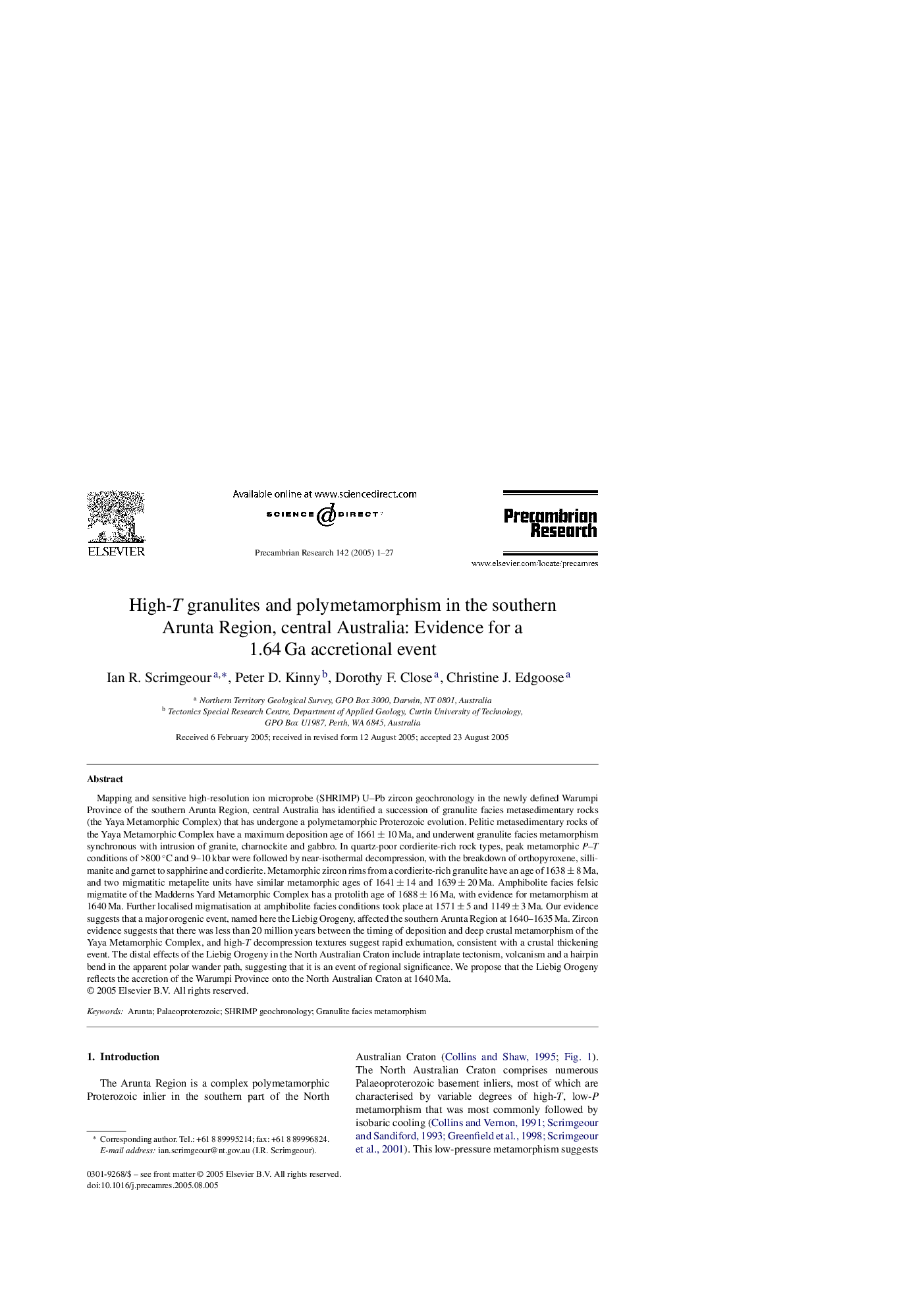| Article ID | Journal | Published Year | Pages | File Type |
|---|---|---|---|---|
| 9533577 | Precambrian Research | 2005 | 27 Pages |
Abstract
Mapping and sensitive high-resolution ion microprobe (SHRIMP) U-Pb zircon geochronology in the newly defined Warumpi Province of the southern Arunta Region, central Australia has identified a succession of granulite facies metasedimentary rocks (the Yaya Metamorphic Complex) that has undergone a polymetamorphic Proterozoic evolution. Pelitic metasedimentary rocks of the Yaya Metamorphic Complex have a maximum deposition age of 1661 ± 10 Ma, and underwent granulite facies metamorphism synchronous with intrusion of granite, charnockite and gabbro. In quartz-poor cordierite-rich rock types, peak metamorphic P-T conditions of >800 °C and 9-10 kbar were followed by near-isothermal decompression, with the breakdown of orthopyroxene, sillimanite and garnet to sapphirine and cordierite. Metamorphic zircon rims from a cordierite-rich granulite have an age of 1638 ± 8 Ma, and two migmatitic metapelite units have similar metamorphic ages of 1641 ± 14 and 1639 ± 20 Ma. Amphibolite facies felsic migmatite of the Madderns Yard Metamorphic Complex has a protolith age of 1688 ± 16 Ma, with evidence for metamorphism at 1640 Ma. Further localised migmatisation at amphibolite facies conditions took place at 1571 ± 5 and 1149 ± 3 Ma. Our evidence suggests that a major orogenic event, named here the Liebig Orogeny, affected the southern Arunta Region at 1640-1635 Ma. Zircon evidence suggests that there was less than 20 million years between the timing of deposition and deep crustal metamorphism of the Yaya Metamorphic Complex, and high-T decompression textures suggest rapid exhumation, consistent with a crustal thickening event. The distal effects of the Liebig Orogeny in the North Australian Craton include intraplate tectonism, volcanism and a hairpin bend in the apparent polar wander path, suggesting that it is an event of regional significance. We propose that the Liebig Orogeny reflects the accretion of the Warumpi Province onto the North Australian Craton at 1640 Ma.
Related Topics
Physical Sciences and Engineering
Earth and Planetary Sciences
Geochemistry and Petrology
Authors
Ian R. Scrimgeour, Peter D. Kinny, Dorothy F. Close, Christine J. Edgoose,
